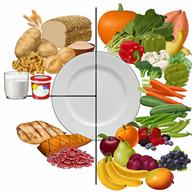Preventing Cerebrovascular Disease
Cerebrovascular disease affects the arteries that supply the brain. Any condition that blocks or disrupts blood flow to the brain can cause cerebrovascular disease. When brain cells lose blood supply, they start to die within minutes, resulting in a stroke. Stroke is the main danger of cerebrovascular disease.
Many conditions can cause cerebrovascular disease and stroke. You can make lifestyle changes to prevent these conditions and to lower your risk of cerebrovascular disease. By making these changes, you can also improve your overall health and quality of life.
What can increase my risk of developing cerebrovascular disease?
Certain factors make you more likely to develop cerebrovascular disease. Some of these factors are things that you cannot control, including:
Being over 65 years of age.
Being female. Strokes happen more often in women.
Family history. Having a parent or sibling who had a stroke before age 65 increases your risk of a stroke.
Race. African Americans have a higher risk of death from stroke.
- Having certain health conditions, such as:
Having a history of transient ischemic attack or stroke.
Other risk factors are things that you can control, including:
Talk with your health care provider about your risk for cerebrovascular disease. Work with your provider to manage any diseases that you have that may contribute to cerebrovascular disease. Your provider may prescribe medicines to help prevent major causes of cerebrovascular disease.
What actions can I take to prevent cerebrovascular disease?
Nutrition

-
Eat more fruits, vegetables, and whole grains.
-
Reduce how much saturated fat you eat. Eat less red meat and fewer full-fat dairy products.
- Eat healthy proteins which include:
Fish. Eat fish containing heart-healthy omega-3 fatty acids such as salmon, albacore tuna, mackerel and herring.
Chicken or turkey.
Nuts and seeds.
Low-fat or nonfat yogurt.
-
Avoid precooked or cured meats, such as bacon, sausages, and meat loaves.
- Avoid foods that contain:
A lot of sugar, such as sweets and drinks with added sugar.
A lot of salt (sodium). Avoid adding extra salt to your food, as told by your provider.
Trans fats (trans-fatty acids), such as margarine and fats in baked goods. Trans fats may be listed as "partially hydrogenated oils" on food labels.
-
Check food labels to see how much sodium, sugar, and trans fats are in foods.
-
Use vegetable oils that contain low amounts of saturated fat, such as olive or canola oil.
Lifestyle
-
Exercise for 30‒60 minutes on most days, or as much as told by your provider. Do moderate-intensity exercise, such as brisk walking, bicycling, and water aerobics. Ask your provider which activities are safe for you.
-
Do not use any products that contain nicotine or tobacco, such as cigarettes, e-cigarettes, and chewing tobacco. If you need help quitting, ask your provider.
-
Do not drink alcohol if:
Your provider tells you not to drink.
You are pregnant, may be pregnant, or plan to become pregnant.
- If you drink alcohol:
- Limit how much you use to:
Be aware of how much alcohol is in your drink. In the U.S., one drink is one 12 oz bottle of beer (355 mL), one 5 oz glass of wine (148 mL), or one 1½ oz glass of hard liquor (44 mL).
Other things to do
-
If told, check your blood pressure regularly and report the readings to your provider.
-
If you are overweight, ask your provider to recommend a weight-loss plan for you. Losing 5–10 lb (2.2–4.5 kg) can reduce your risk of diabetes, atherosclerosis, and high blood pressure.
Learn more about preventing cerebrovascular disease from:
Centers for Disease Control and Prevention:
cdc.gov
Contact a health care provider if:
You develop any of the following symptoms:
Headaches that keep coming back.
Nausea.
Vision problems.
Increased sensitivity to noise or light.
Depression, anxiety, irritability, or mood swings.
Difficulty concentrating or paying attention or problems with memory.
Sleep problems or feeling tired all the time.
-
You are light-headed or you faint.
-
You are taking blood thinners and you fall or you get a minor injury to the head.
-
You have a bleeding disorder and you fall or you get a minor injury to the head.
- You have any symptoms of a stroke. "BE FAST" is an easy way to remember the main warning signs of a stroke:
B - Balance.Signs are dizziness, sudden trouble walking, or loss of balance.
E - Eyes.Signs are trouble seeing or a sudden change in vision.
F - Face. Signs are sudden weakness or numbness of the face, or the face or eyelid drooping on one side.
A - Arms. Signs are weakness or numbness in an arm. This happens suddenly and usually on one side of the body.
S - Speech. Signs are sudden trouble speaking, slurred speech, or trouble understanding what people say.
T - Time.Time to call emergency services. Write down what time symptoms started.
- You have other signs of a stroke, such as:
These symptoms may be an emergency. Get help right away. Call 911.
This information is not intended to replace advice given to you by your health care provider. Make sure you discuss any questions you have with your health care provider.
